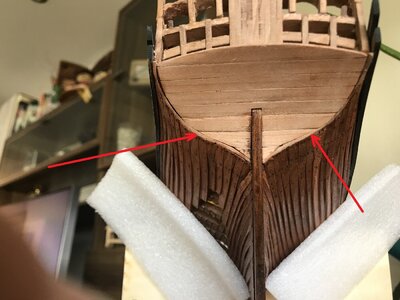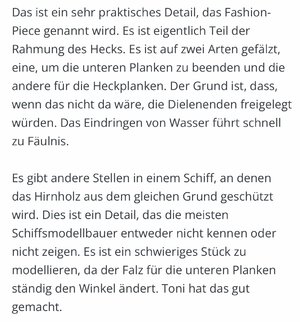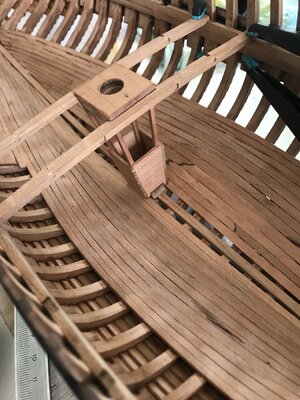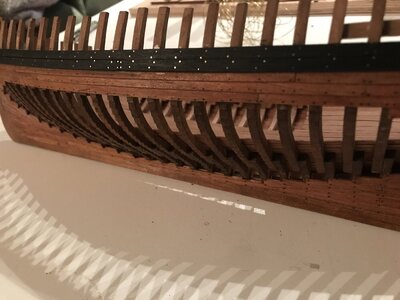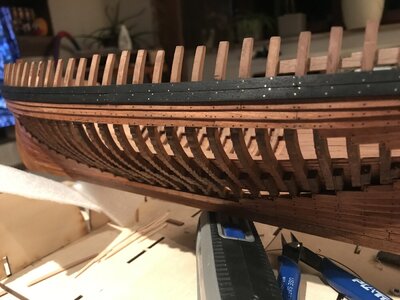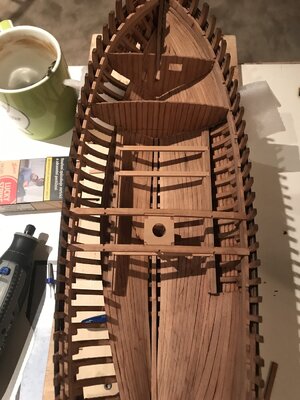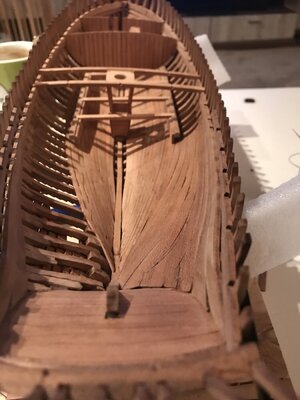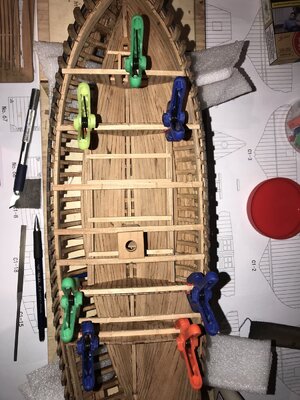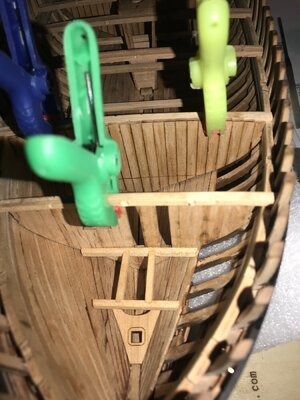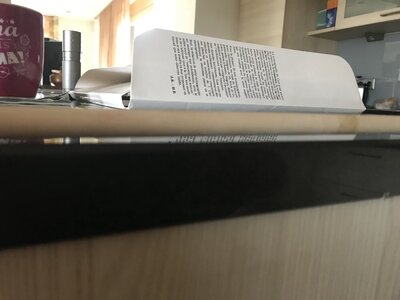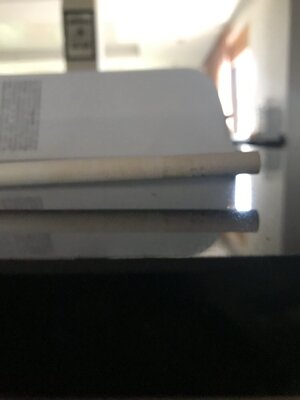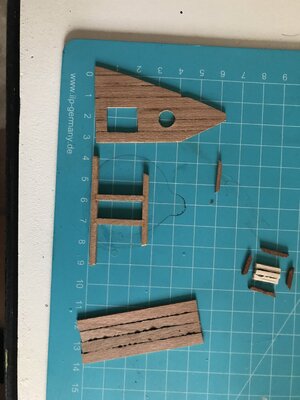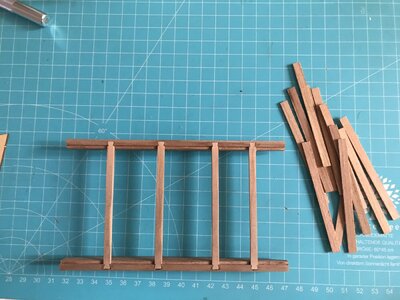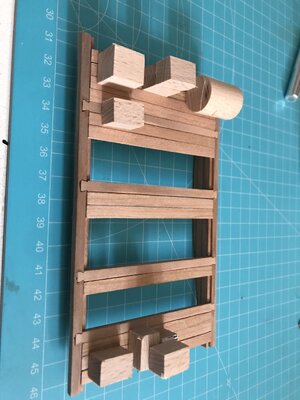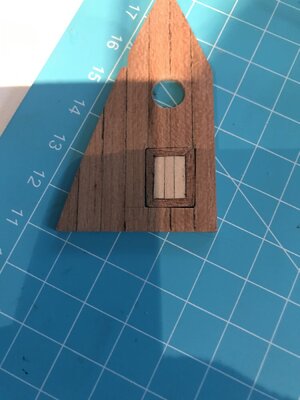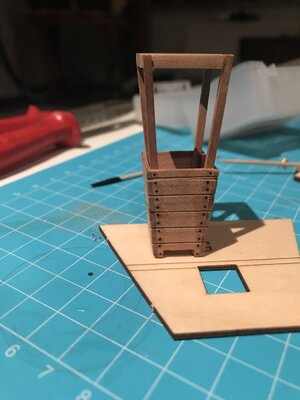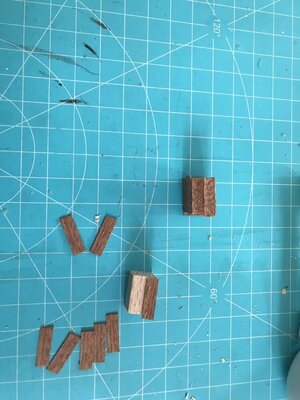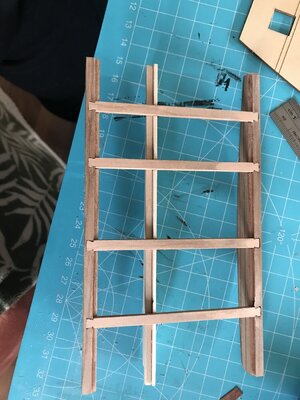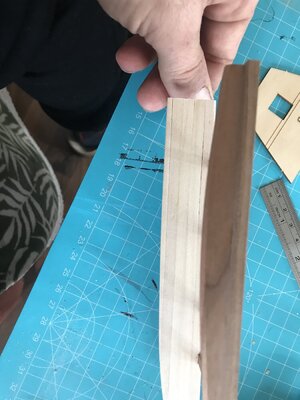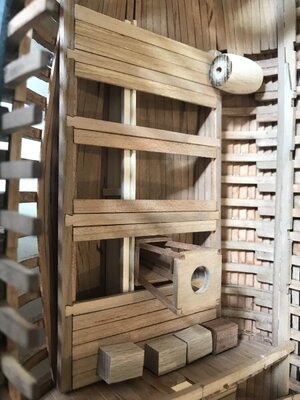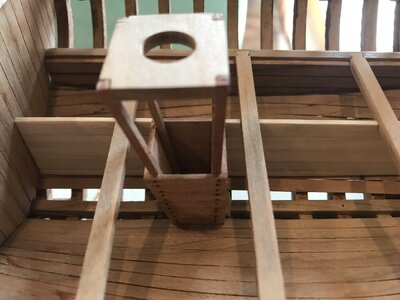The fashion piece is a smart thing, I think it's good.
-

Win a Free Custom Engraved Brass Coin!!!
As a way to introduce our brass coins to the community, we will raffle off a free coin during the month of August. Follow link ABOVE for instructions for entering.
-

PRE-ORDER SHIPS IN SCALE TODAY!
The beloved Ships in Scale Magazine is back and charting a new course for 2026!
Discover new skills, new techniques, and new inspirations in every issue.
NOTE THAT OUR FIRST ISSUE WILL BE JAN/FEB 2026
- Home
- Forums
- Ships of Scale Group Builds and Projects
- Le Coureur 1776 1:48 PoF Group Build
- Le Coureur 1776 1:48 Group Build Logs
You are using an out of date browser. It may not display this or other websites correctly.
You should upgrade or use an alternative browser.
You should upgrade or use an alternative browser.
Thank you Adi, born out of necessity. I am now a little more satisfied with the optics and am in the learning phase because it is my second model on the other hand, I am happy to be in our assembly to learn, to learn tips and tricks and to receive criticism. I am very grateful to all of you for this (in the entire SOS forum), that too has to be said. Even
Hello Uwe, I took another plank, watered it and bent it, sanded it and adjusted it. Normally this fashion piece is a bit wider, I think it would be better to plan it from the beginning to bring it out to its best advantage, but I didn't have the space. As I said, it was born out of necessity in order to end nicely delivered. I am glad that it is also historically correct.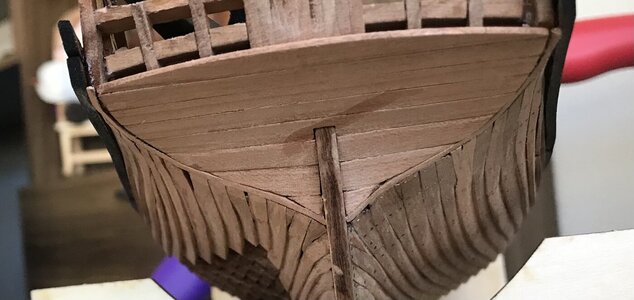
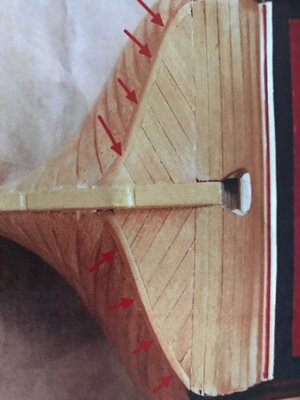


Last edited:
You're absolutely right, Tobias, it's good to be be in this forum. I'm grateful that Uwe dragged me here a year ago. We all learn from each other, which is so motivating. It looks really good for your 2nd ship.Thank you Adi, born out of necessity. I am now a little more satisfied with the optics and am in the learning phase because it is my second model on the other hand, I am happy to be in our assembly to learn, to learn tips and tricks and to receive criticism. I am very grateful to all of you for this (in the entire SOS forum), that too has to be said. Even
Hallo Tobias,
let us shortly discuss (brainstorming) if your solution is really technically or historical correct...... I can only say in moment how was it usually done, but maybe there were exceptions of the general
The fashion timber or fashion piece was the last frame giving the final form of the stern, to produce the fashion.
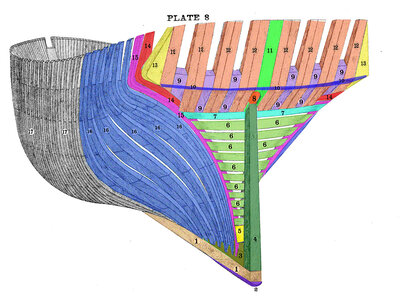
1. Keel (light peach) 2. Skeg (dark purple) 3. Deadwood (olive drab) 4. Stern post (forest green) 5. Filling chock (bright yellow) 6. Filling transoms (pale yellow-green) 7. Wing transom (turquoise) 8. Helm port (orange) 9. Counter timbers (pale violet) 10. Margin (indigo) 11. Horn timber (green) 12. Stern timbers (apricot) 13. Side-counter timbers (pale yellow) 14. Quarter-timbers (red) 15. Fashion timber (fuchsia) 16. Cant frames (blue) 17. Square body frames (uncolored)
But this frame was also usually covered completely with the planking, either hull planking and the transom planking
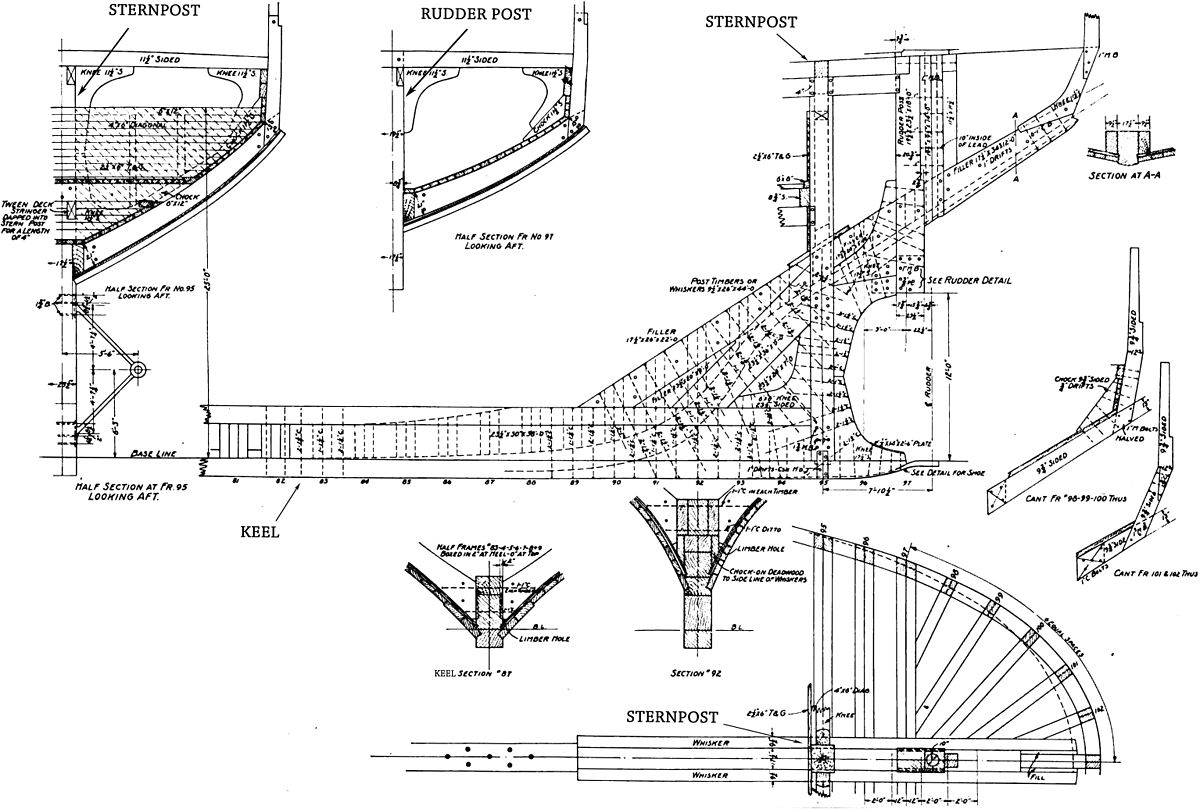
 en.wikipedia.org
en.wikipedia.org
and also f.e. these sketches
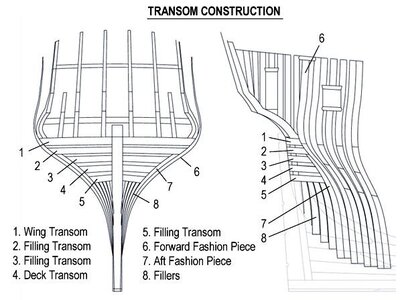
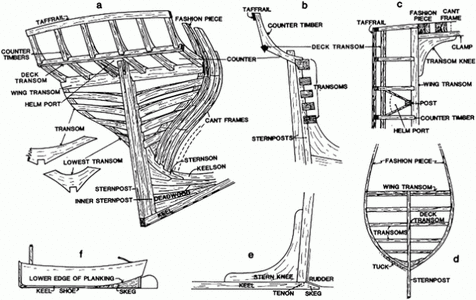
and usually the fashion timber was covered, a beautiful example of such a stern was done on the Le Cerf model by Olha alias @shipphotographer.com
Also a clinker build hull
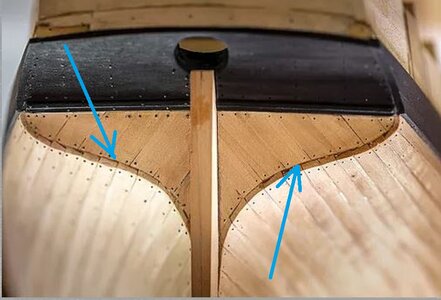
With such a planking you cover the framing and you have only one joint which have to be caulked (blue arrows)
On your example, which you found, I guess it is not the fashion timber by itself, otherwise a structural element of the hull would be permanently exposed to the saltwater. And in addition you would have two joints which have to be caulked....... so more disadvantages from technical point of view.
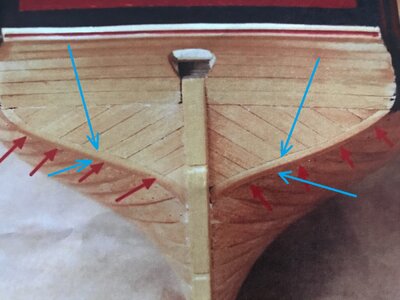
But maybe it was done in the past like in the last photo .......
let us shortly discuss (brainstorming) if your solution is really technically or historical correct...... I can only say in moment how was it usually done, but maybe there were exceptions of the general
The fashion timber or fashion piece was the last frame giving the final form of the stern, to produce the fashion.

1. Keel (light peach) 2. Skeg (dark purple) 3. Deadwood (olive drab) 4. Stern post (forest green) 5. Filling chock (bright yellow) 6. Filling transoms (pale yellow-green) 7. Wing transom (turquoise) 8. Helm port (orange) 9. Counter timbers (pale violet) 10. Margin (indigo) 11. Horn timber (green) 12. Stern timbers (apricot) 13. Side-counter timbers (pale yellow) 14. Quarter-timbers (red) 15. Fashion timber (fuchsia) 16. Cant frames (blue) 17. Square body frames (uncolored)
But this frame was also usually covered completely with the planking, either hull planking and the transom planking

Stern - Wikipedia
and also f.e. these sketches


and usually the fashion timber was covered, a beautiful example of such a stern was done on the Le Cerf model by Olha alias @shipphotographer.com
Also a clinker build hull

With such a planking you cover the framing and you have only one joint which have to be caulked (blue arrows)
On your example, which you found, I guess it is not the fashion timber by itself, otherwise a structural element of the hull would be permanently exposed to the saltwater. And in addition you would have two joints which have to be caulked....... so more disadvantages from technical point of view.

But maybe it was done in the past like in the last photo .......
Hello Uwe, I understand your objection to the historical or technical execution. I can definitely not tell you because I have too little knowledge about it, as I said I did some research and found this post in another forum with the note that it is often not shown. Attached is the small report in which it is addressed. I think it makes sense to protect the front side of the plank because a board is open on this side (grain) and so the water can be sucked in through the fibers and can thus penetrate deeper into the plank.
Attachments
Understood from where it is coming.Hello Uwe, I understand your objection to the historical or technical execution. I can definitely not tell you because I have too little knowledge about it, as I said I did some research and found this post in another forum with the note that it is often not shown. Attached is the small report in which it is addressed. I think it makes sense to protect the front side of the plank because a board is open on this side (grain) and so the water can be sucked in through the fibers and can thus penetrate deeper into the plank.
but I am 99,9% sure, that it was, if it was used, and extra timber which was additional attached on top of the structural framing. I have really my doupts, that a frame, and the fashion piece is a frame, was exposed to the water. So I think, that this timber was not the fashion piece.
Every some years the hull planking was repaired or renewed, this was normal, but changing a frame was a much bigger work, so they did everything to protect the structure.
Please be so kind to send me via a PM the link to the german forum, where the photo and text was shown.......
The problem with this approach (upper picture) is that ends of planks are not protected - that's where rot will start. I'm not sure about French ship building practices. Fashion piece on the model I'm currently working on (British) provides rabbet for both, body and stern planking. It's quite a complex piece, which on a model can be done in two overlapping pieces. Just my two cents.Hallo Tobias,
let us shortly discuss (brainstorming) if your solution is really technically or historical correct...... I can only say in moment how was it usually done, but maybe there were exceptions of the general
The fashion timber or fashion piece was the last frame giving the final form of the stern, to produce the fashion.
View attachment 258870
1. Keel (light peach) 2. Skeg (dark purple) 3. Deadwood (olive drab) 4. Stern post (forest green) 5. Filling chock (bright yellow) 6. Filling transoms (pale yellow-green) 7. Wing transom (turquoise) 8. Helm port (orange) 9. Counter timbers (pale violet) 10. Margin (indigo) 11. Horn timber (green) 12. Stern timbers (apricot) 13. Side-counter timbers (pale yellow) 14. Quarter-timbers (red) 15. Fashion timber (fuchsia) 16. Cant frames (blue) 17. Square body frames (uncolored)
But this frame was also usually covered completely with the planking, either hull planking and the transom planking

Stern - Wikipedia
en.wikipedia.org
and also f.e. these sketches
View attachment 258871 View attachment 258872
and usually the fashion timber was covered, a beautiful example of such a stern was done on the Le Cerf model by Olha alias @shipphotographer.com
Also a clinker build hull
View attachment 258875
With such a planking you cover the framing and you have only one joint which have to be caulked (blue arrows)
On your example, which you found, I guess it is not the fashion timber by itself, otherwise a structural element of the hull would be permanently exposed to the saltwater. And in addition you would have two joints which have to be caulked....... so more disadvantages from technical point of view.
View attachment 258873
But maybe it was done in the past like in the last photo .......
You are on apretty good path, very nicely done.
Wow - you are very fast my friend - very good progress with the interior works
Yesterday I had some air and was able to make the two partitions and nail the wall using 0.7mm brass wire. Then the whale was redacted. Today it's the other side.
The hatch cover with frame looks quite nice




